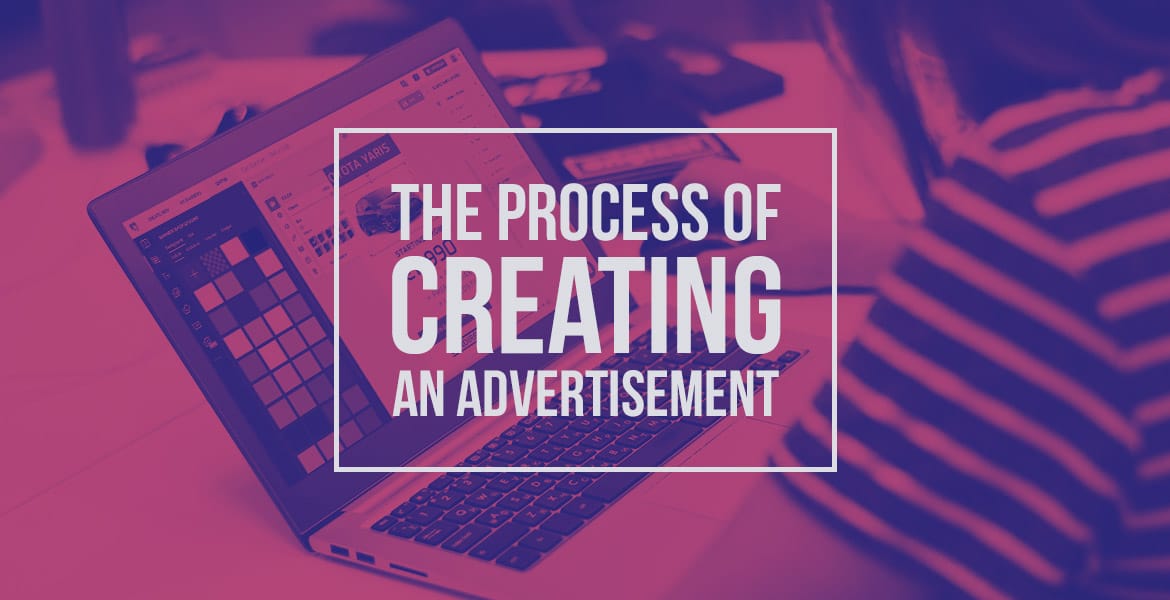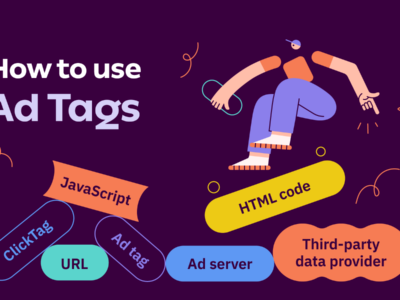If you want to learn how to make an advertisement, you are in the right place.
Although dedicated to those who are just grasping the surface of this industry, this article may also help skilled marketers better organize themselves.
Well, let’s get right to the subject and analyze the most important steps of the process involved in creating an advertisement.
Table of Contents
- Set up your main objectives
- Research the market, the competition, and your audience
- Select your channels
- Craft a compelling message
- Design eye-catching visuals
- Set your budget and timeline
- Track and analyze your results
- Test and refine
- What Types of Formats Are Best for Online Advertising?
- Can You Create an Advertisement Online?
- Conclusion
1. Set up your main objectives
What is the purpose of your advertising campaign? What are your main objectives? Are your goals feasible or not? You should analyze these questions and answer them honestly. Setting clear objectives for your advertisement before starting the creative process is important. Whether you aim to boost sales, create brand awareness, drive website traffic, or generate leads, defining your objectives will guide the entire advertising process and enable you to measure success. Once you have established your objectives, you can move on to the next step and begin your research.
2. Research the market, the competition, and your audience
To create a successful advertisement, it’s important to research some key factors on which your campaign depends. Understanding the market and its behavior is crucial. This includes studying how things have changed over the past few months and what experts predict for the near future.
You should also know your position in the market and the role of your competitors. Find out how they advertise their products, but avoid copying their campaigns. Instead, come up with something new and creative that will make your target audience convert into clients.
Of course, based on your industry and your niche, there may be other important questions to answer here such as:
- To what demographic group am I addressing my messages?
- What is my clients’ social status?
- Are they young and unemployed?
- Are they professionals from a specific niche?
- Are they old or not?
- What’s the level of their education?
- Where do they live?
- What is their relationship with the competition?
The list of questions could go on forever. What’s essential here is identifying which one of them – or maybe more – suits your goals and answers them with honesty and objectivity.Once you do this, you can move further to the next step.
3. Select your channels
Based on your demographic research, you will be able to narrow your search to some specific channels of media distribution suitable for your campaign. There are various platforms available for displaying ads, including social media, Google’s Display Network, search engines, and third-party websites. Google Display Network provides a wide range of websites, videos, and apps, which helps to reach a diverse online audience, including those who are not actively searching for your brand.
Each platform targets different audiences and marketing expectations. Facebook and Instagram ads provide detailed targeting options, while Google Ads connects with users who are actively looking for related information.
With Creatopy, you gain the power to create a comprehensive set of banners for your online advertisements, enhancing your capabilities and efficiency.
Therefore, it will be easy to design them for different channels in less time than if you would have done it individually.
4. Craft a compelling message
Take all the information you manage to gather up to this step regarding your products and your targeted audience.
Think also about the delivery channels you have chosen for your ads and learn how to write advertisements tailored to each one of those channels. Once you have determined the delivery channels, you can start crafting a message that is easy to understand, connects with your target audience, and effectively conveys the advantages of your product or service. Address the needs, desires, or pain points of your intended audience, and emphasize what makes your offering unique from that of your competitors. Ensure that your message is consistent across all channels to reinforce your brand identity.
5. Design eye-catching visuals
Obviously, this is the hardest part of the entire advertisement creation process. Everything you have done until now has prepared you for this step. Now, it’s time to put your creativity to work and actually design your advertisements.
Take the top three or five ideas from your previous sketches and use them to create raw advertisements. If you are using Creatopy as your main advertisement maker, all your projects will be automatically saved online. You can get back to them to make modifications, or you can share them with your peers for valuable input. It will also help you show your rough designs to people who are in your target audience. Their input and advice may help you adjust your advertisements in order to meet the targeted demographic needs and values.
6. Set your budget and timeline
To maximize your return on investment, it’s important to establish a budget for your advertising and allocate your resources accordingly. When setting your budget, you should take into account factors such as the cost of producing your ads, where they will be placed, and how long your campaign will run. Additionally, it’s essential to set a realistic timeline for each stage of the advertising process to ensure you stay on track and meet all of your deadlines.
7. Track and analyze your results
Once the designs are ready to be delivered online, you can start your campaign based on your selected delivery channels.
At this point, you need to define your budget and select the criteria for publishing your advertisements on each channel in particular.
Each advertising platform (or social media platform that includes paid advertising) will let you select your own parameters of delivery, based on demographics, age groups, types of websites, industries, countries, and regions, etc. Tailoring these parameters ensures your ads reach the most relevant audience for optimal engagement and results. This data is also important for your future campaigns. You will start your future design processes based on your initial results and try to improve them.
8. Test and refine
Continuously test different elements of your advertisement, including messaging, visuals, and CTAs, to identify what resonates best with your audience. A/B testing enables you to compare different variations and improve your strategy based on immediate feedback. Stay agile and adaptable, making adjustments as necessary to enhance performance and reach your goals.
What Types of Formats Are Best for Online Advertising?
When it comes to online advertising, the best format depends on various factors such as the campaign objectives, target audience, and the platform being used. However, some commonly used formats that tend to perform well include:
- Display Ads: Visual banners or sidebar ads for brand awareness and traffic.
- Video Ads: Engaging storytelling on platforms like YouTube to showcase products/services.
- Social Media Ads: Sponsored posts, carousels, or Stories ads for targeted audience reach.
- Search Ads: Text-based ads on search engine results pages (SERPs) to capture user intent.
- Native Ads: Seamless integration with platform content for a less disruptive experience.
- Interstitial Ads: Full-screen ads before accessing content are effective but should be used sparingly.
- Interactive Ads: Engaging content like games or quizzes to drive user interaction and attention.
Can You Create an Advertisement Online?
Many people who are new to the marketing industry often assume that designing a banner requires professional software and design skills. While this may be true for some specific tasks, it is not always the case. Nowadays, creating banners for online advertising campaigns has become a relatively simple process if you know where to look and which tools to use. Therefore, the conclusion is that it is now easier than ever to create an advertisement using an online tool.
Related articles:
How to Design TikTok Ads That Will Skyrocket Your Brand
How to Create Animated Facebook Ads that Convert
20 Cool Banner Ads Examples Every Marketer Should Know
Conclusion
When we think about advertisement design, most of us imagine that it starts with the actual design and ends with the setting up of a delivery channel.
However, if you want your job to be professional and thorough, you need to do everything by the book. This means that you need to understand the entire process behind an advertising campaign. It starts with an in-depth analysis of your company and products to be advertised, followed by extensive research on the market and the targeted population.
When you get to actually design the banners, you already know exactly what to expect from your campaign. You know what types of individuals make the audience you are addressing your messages to and how to properly quantify the results.
It’s now easier than ever to design a professional banner thanks to the available online tools such as Creatopy. However, you can make things even easier by going through each of these steps and base your design on actual data. It’s quite possible that when you’ll get to the sixth step, you will already have a few ideas in mind, at least a starting point from which to go on with your design. We hope we helped you understand better what makes a good advertisement.
How many of these steps did you actually go through on each of your marketing campaigns?









Can i call u Gab,….. u are dame Good
Well presented
its very helpful
yes the information is very useful
very nice post thanks for sharing with us
this post really helpful for me
Thanks for sharing with us it is presented well
I find it cool when you said that a company should start planning out their advertisement by researching their ideal audience for it based on their typology and personality. Another way to go about this is to ask a local production company to do it for them. That way, one can focus on selling more products and get an expert opinion on how to attract more customers in the process.
This article is very helpful to me, I always don’t know how to make advertising material, before I used a tool called bigspy to look up a material, now I have some new ideas
This is really interesting, I now know what I need to do, Thanks guys.
Very helpful
Nice
This responded one of the questions of my summative from design. It was super helpful. Continue the great work.
hey gabriel im a person that will look forward to doing this
Every time I watch an ad or a commercial on TV, I always think to myself how did it manage to keep me watching till the end. There are some commercials I feel like I want to pay attention to and some that I don’t, and so it helped when your article pointed out that identifying a target audience is key for effective advertising. Many times I find myself watching ads whenever the person on the screen involved is a middle-aged worker like me, and so I can feel that connection. If ever I were to make an ad or commercial, I’d make sure that I would get my target audience in mind and then get some video editing done to make sure that it appeals to said audience, most likely that would require some professional help.
Yes this was good I’m on a start to make some money
As a marketing analyst I found this piece to be very insightful and timely. Exactly what i needed.
Very helpful
Very helpful
very much helpful. Was looking for something like this to refer and get an idea on how to create advertisements online. I think if you put these steps in a flowchart https://creately.com/lp/flowchart-software/ and if we can get the outcome we can easily implement the plan right?
Nice, but I do not understand this
any way how do you make the ad
Hi, Adam. You can create a free Creatopy account and design an ad starting with one of our templates.
Very well articulated
Nice Article. Helpful. Well explained on how to create advertisement online.
I wanna start my own ads!!
Hi, Hazel. That’s a great idea. Have you tried designing them with Creatopy?